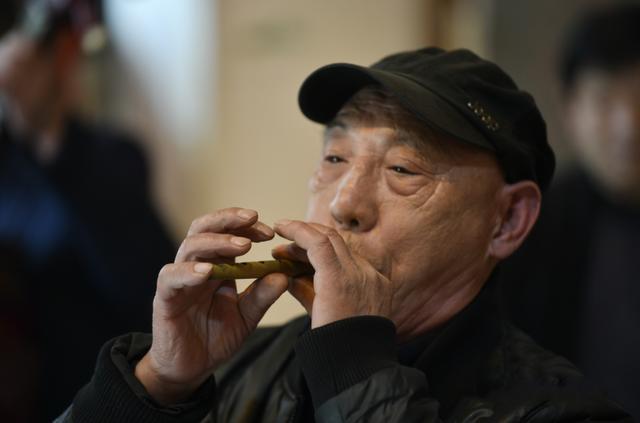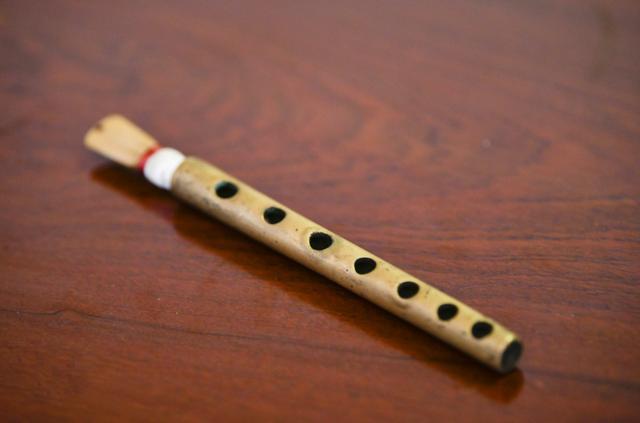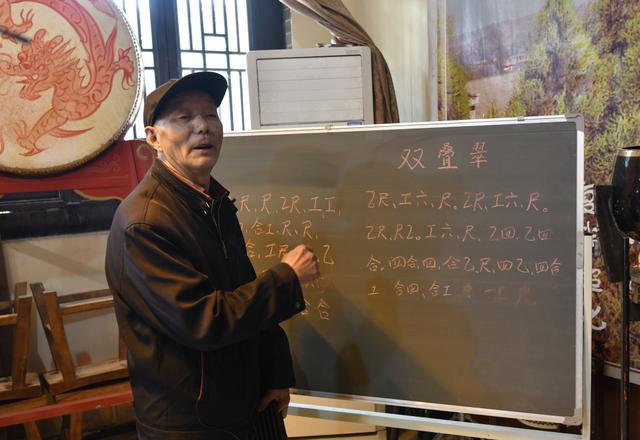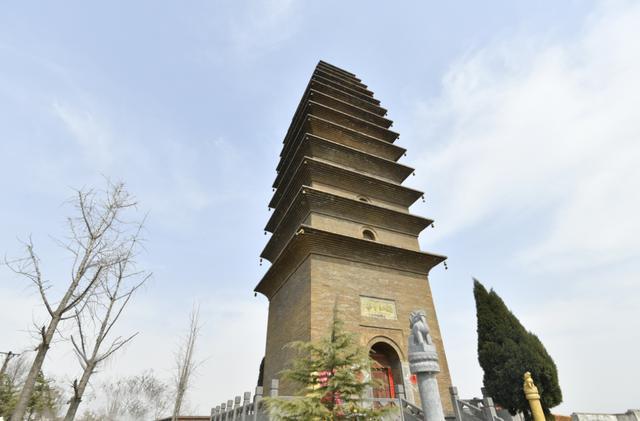A thousand-year-old "symphony"
325 views · Organized by 向日葵 on 2022-03-15
In March, another national event will bloom in Zhengzhou. The 2022 China Intangible Cultural Heritage Protection Annual Conference will be held in Zhengzhou from March 21 to 24.
There are 6 national intangible cultural heritages in Zhengzhou, do you know which ones are there?
The lingering sound lingers around the beam for three days.” - Music is a common hobby of human beings and brings people a pleasant spiritual enjoyment. There is an ancient Chaohua Temple on the banks of the Weishui River in Xinmi, Zhengzhou, and it still retains the ancient temple with a history of more than 1,500 years. The legacy of ancient times "superhua blowing songs".
Chaohua blowing song is mainly played by the pipe, supplemented by sheng, flute, and xiao, plus percussion, rhythm, drum, cymbal, hand hairpin, gong, cymbal, chime, cloud gong, etc. It is an important ancient symphonic instrumental music in my country. play form.
On September 2, 2013, Xinmi "Chaohua Blowing Song", known as the ancient fossil of Chinese music, appeared at the International Military Music Festival on the Red Square in Moscow, Russia. This Moscow Military Music Festival lasted for 8 days. Theatrical performance, and "Super Hua Blowing Song" makes an exception to perform every day.
"There is no music in Xunyang, and the sound of silk and bamboo is not heard all the year round." Bai Juyi also expressed his helplessness and dissatisfaction that he could not hear music in "Pipa Xing".
There are 6 national intangible cultural heritages in Zhengzhou, do you know which ones are there?
The lingering sound lingers around the beam for three days.” - Music is a common hobby of human beings and brings people a pleasant spiritual enjoyment. There is an ancient Chaohua Temple on the banks of the Weishui River in Xinmi, Zhengzhou, and it still retains the ancient temple with a history of more than 1,500 years. The legacy of ancient times "superhua blowing songs".
Ancient "symphony", magical!
As one of the six national intangible cultural heritage projects in Zhengzhou, "Chaohua Blowing Song" is the only music performance skill among them.Chaohua blowing song is mainly played by the pipe, supplemented by sheng, flute, and xiao, plus percussion, rhythm, drum, cymbal, hand hairpin, gong, cymbal, chime, cloud gong, etc. It is an important ancient symphonic instrumental music in my country. play form.


Cultural Communication Bridge, like it!
The legacy of thousands of years of advocacy has been inherited from generation to generation in the Central Plains, and it still reverberates on the banks of the Yellow River. Chaohua blowing songs allows people after a thousand years to taste the magical culture with local characteristics and reproduce the wonderful rhythm of ancient court music.


On September 2, 2013, Xinmi "Chaohua Blowing Song", known as the ancient fossil of Chinese music, appeared at the International Military Music Festival on the Red Square in Moscow, Russia. This Moscow Military Music Festival lasted for 8 days. Theatrical performance, and "Super Hua Blowing Song" makes an exception to perform every day.
Inheriting the ancient rhythm, can be expected!
Among the "six arts" of ancient aristocrats, "music" ranks second, which shows that music occupies an important position in people's lives."There is no music in Xunyang, and the sound of silk and bamboo is not heard all the year round." Bai Juyi also expressed his helplessness and dissatisfaction that he could not hear music in "Pipa Xing".

Involving musical instruments
Guanzi (pinyin: guǎn zi) is a wind instrument. In ancient China, it was called "筚篥" or "Luguan". Its structure consists of three parts: the whistle, the intruder and the cylindrical body.
Xiao (pinyin: xiāo), divided into dongxiao and qinxiao. And because the flute has a hole, it is different from the pan flute without a hole, so it is called "dongxiao". The xiao has a long history, the sound is round and soft, quiet and elegant, suitable for solo and ensemble. It is generally made of bamboo with blow holes at the top.
Sheng (pinyin: shēng) is one of the oldest musical instruments in China. It is the earliest instrument in the world to use free reeds, and it is also the originator of most existing reed instruments in the world.
Yunluo (pinyin: yún luó), which appeared in the Tang Dynasty and became popular in the Yuan Dynasty, is a percussion instrument used by the Han, Tibetan, Mongolian, Manchu, Naxi, Bai, Yi and other ethnic groups. The ancient name Yunzhe, also known as Yun'ao, is also known as Jiuyin Gong in the folk. Tibetans call it Dingdong and Dingdang.
iao Gong (pinyin: xiǎo luó), named for its small size. Copper, round, about 22 cm in diameter, slightly raised in the center, not tied. When playing, use your left finger to hold the inner edge of the gong, and hold a thin wood chip in your right to strike the sound. Its sound is bright and crisp.
Guess you like
Organized by 南丘 on 2022-03-31
Every morning, before 8 o’clock, the sound of the pipe will sound on time in the piano room 418 of the Qinfang Building of the Central Conservatory of Music. This is Hu Zhihou, a professor of the Folk Music Department of the Central Conservatory of Music, a pipe player and an educator, who is over 70 years old.
read >>
Organized by 雨童 on 2022-03-21
Bai folk instrumental music mainly includes sanxian music, suona wind and percussion music, cave scripture music, etc. In addition, there are also ancient music and tunes played by bamboo flute, mouth spring, wood leaf and so on.
read >>
Organized by 赵锦辛 on 2022-03-15
Guanzi, anciently known as bi li , jia guan. In ancient times, there was a kind of wind instrument called "pipe". "Book of Songs, Zhou Song, You Gu": "If you are prepared, you will play, and the flute tube will be prepared." "Erya Shile": "The big tube is called the posthumous title."
read >>
Organized by 八日蝉 on 2022-03-10
On March 5th, the Yuhang District Grassroots Committee of the Civil Revolutionary Committee and Ding Zhigang Bamboo Flute Studio jointly launched a public welfare classroom activity of "Promoting Lei Feng Spirit and Inheriting Bamboo Flute Culture" in Zijing Village, Zhongtai Street.
read >>
Organized by 夏浩东 on 2022-01-25
Feitian or Bodhisattva hands in Mogao Grottoes in Dunhuang
Those exquisite musical instruments that seem familiar but cannot be named,
What are their real bodies?
Are they still alive?
What would it sound like if it was recovered?
read >>
 渝公网安备 50010702504639号
渝公网安备 50010702504639号